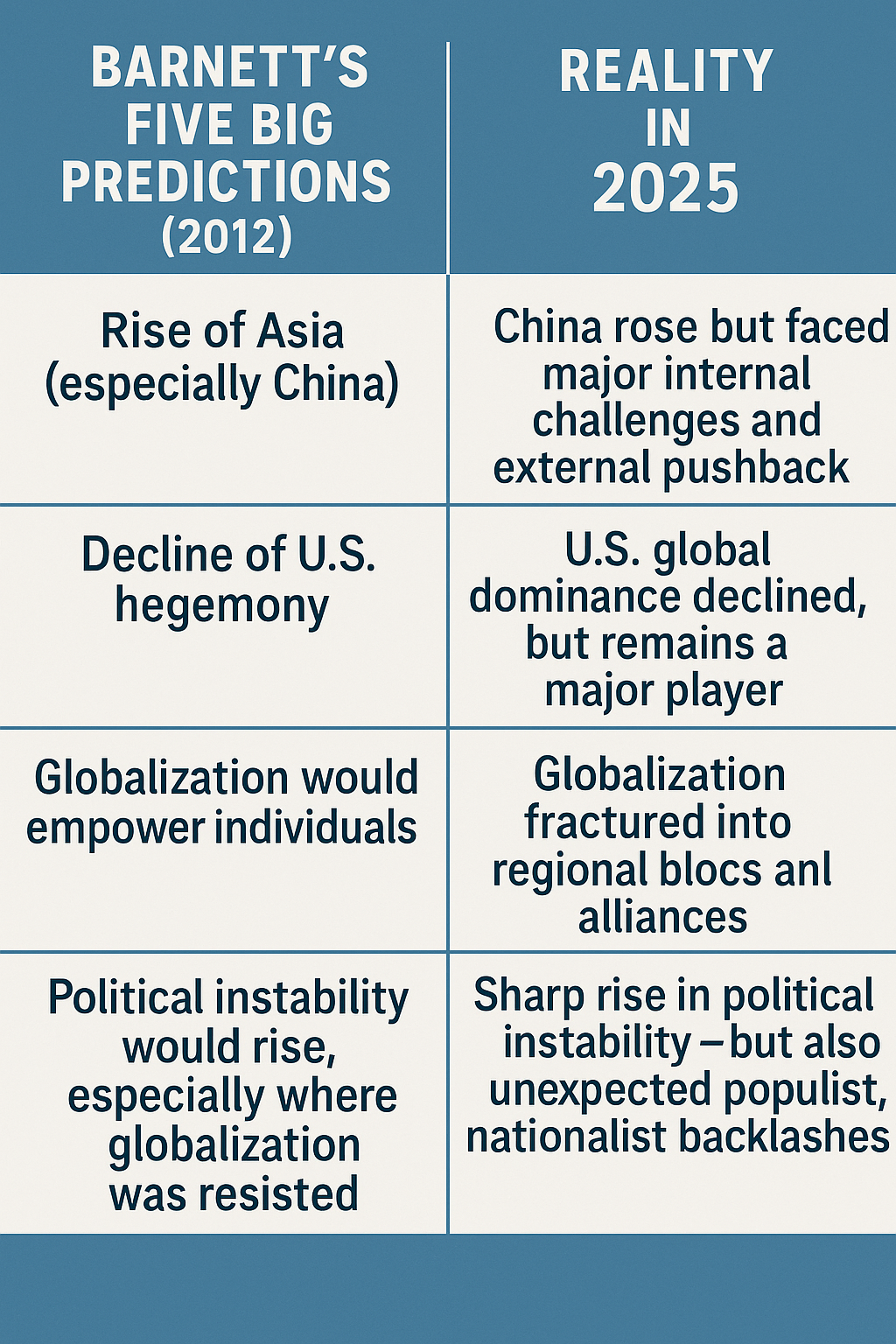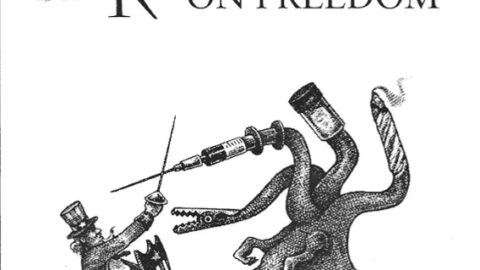Introduction
In 2012, Dr. Thomas P.M. Barnett, chief analyst for WikiStrat, made a bold and detailed prediction: China, after decades of rapid economic growth, was about to hit a “great development wall.” Through his crowdsourced analysis and historical comparisons, Barnett outlined systemic demographic, environmental, economic, and political pressures that would challenge China’s ascendancy. Now, more than a decade later, many of his warnings have not only materialized but have profoundly shaped the 21st-century global landscape.
- China’s Trajectory: Escape Velocity, Aging, and Global Power – From Barnett’s Model to Today (2)
- The Eight-Stage Trajectory of China: Barnett’s Vision and the Modern Reality (3)
- China’s Inevitable Slowdown and the Global Strategic Shift: Barnett’s Warning and the Modern Reality (4)
This article will walk through Barnett’s original insights, how they evolved, and what they mean for the present day – not only for China but for global power structures.
Barnett’s Core Argument (2012)
Barnett described China’s growth pattern as moving from extensive growth (rapid expansion by adding labor and capital) to intensive growth (needing innovation and productivity). He noted several major challenges:
| Challenge | Description |
|---|---|
| Demographic Collapse | China’s one-child policy was ending the “demographic dividend.” A shrinking, aging population was inevitable. |
| Environmental Degradation | Severe air, water, and land pollution threatened public health and economic stability. |
| Dependency on Resources | China’s dependency on imported oil and materials created strategic vulnerabilities. |
| Defensiveness | Rising military expenditures indicated increasing paranoia rather than confidence. |
| Democracy Pressure | Historically, no major economy had crossed $10,000 per capita GDP without democratizing. |
Barnett outlined China’s development in comparison to historical pathways:
- From Centralized Socialism → to State-Directed Capitalism → hoping to achieve Big Firm Capitalism and eventually Entrepreneurial Capitalism.
- Warning: China risked falling backward into Oligarchic/Princeling Capitalism (elite rule).
The Last Decade: How Did Barnett’s Predictions Play Out?
1. Demographic Crisis
- Confirmed and worse than expected:
China’s birth rate plummeted below replacement levels. In 2023, China officially entered population decline — the first such event in 60 years. - Aging Crisis:
The “4-2-1” problem exploded. Fewer young workers must support an overwhelming elderly population without a robust pension system.
2. Environmental Degradation
- Partial improvements, but too late:
China’s “War on Pollution” (launched 2014) made major progress in air quality, but water scarcity, soil degradation, and industrial pollution remain critical threats. - Climate leadership paradox:
China now leads in green energy infrastructure but remains the world’s largest carbon emitter.
3. Resource Dependencies
- Supercharged vulnerabilities:
China became the world’s largest oil importer (2017).
It depends heavily on imported food, energy, and key minerals despite its “Made in China 2025” ambitions. - Belt and Road Initiative (BRI):
An attempt to secure resources globally by building infrastructure projects across Asia, Africa, and Europe — often trapping recipient countries in debt.
4. Defensive Posturing and Military Expansion
- True to prediction:
China massively expanded its navy, cyberwarfare capabilities, and nuclear arsenal.
But the military buildup, like Barnett warned, is largely defensive — to prevent encirclement by U.S.-aligned forces in the Indo-Pacific.
5. Democratization?
- The opposite direction:
Under Xi Jinping, China became even more authoritarian.- Xi abolished term limits (2018).
- Mass surveillance and social credit systems monitor citizens 24/7.
- Hong Kong’s autonomy was crushed.
Global Impact Today
| Area | Result |
|---|---|
| Global Economy | China’s growth slowed dramatically post-2018, exacerbated by COVID-19 lockdowns and supply chain shocks. |
| US-China Rivalry | Full decoupling efforts underway in key sectors: semiconductors, AI, critical minerals. |
| Regional Tensions | Taiwan Strait tensions near historic highs. Southeast Asia hedges between China and the U.S. |
| Internal Turmoil | Widespread youth unemployment (~20%), slowing property sector, urban debt crises. |
| Global Alliances | China moved closer to Russia and the Global South; BRICS expansion (2024) was partly China-driven. |
Barnett’s concern that China could “fall back” into oligarchy was realized: Xi Jinping consolidated power through party loyalty, state enterprise dominance, and a shrinking private sector under tight surveillance.
Where Are We Going?
China now faces an increasingly difficult reality:
- An economic slowdown that may resemble Japan’s “Lost Decades,” but without a democratic safety valve.
- A strategic isolation from Western markets and technology.
- Internal dissent is rising but ruthlessly suppressed.
- The U.S. “Five Eyes” network, the Quad alliance, and other regional compacts are responding to China’s assertiveness militarily and economically.
Yet, China retains powerful advantages:
- A massive internal market.
- World-leading advances in AI, quantum computing, and green energy.
- A diplomatic push to forge multipolar global governance, challenging U.S. and Western dominance.
In Barnett’s terms:
China has hit the “Great Development Wall” — and how it navigates the next decade will determine if it fractures, stagnates, or adapts into a new hybrid model.
Conclusion
Dr. Barnett’s foresight was extraordinary.
- Demographics, environment, resource dependency, defensive posturing, and political rigidity all came to bear.
- Yet, the story isn’t over: China’s vast resources, technical prowess, and “civilizational state” identity may allow it to forge a new development path rather than simply collapse or liberalize like previous models suggest.
For the West, Asia, and the world, the question is no longer if China will change, but how — and whether that change will bring stability or confrontation.






